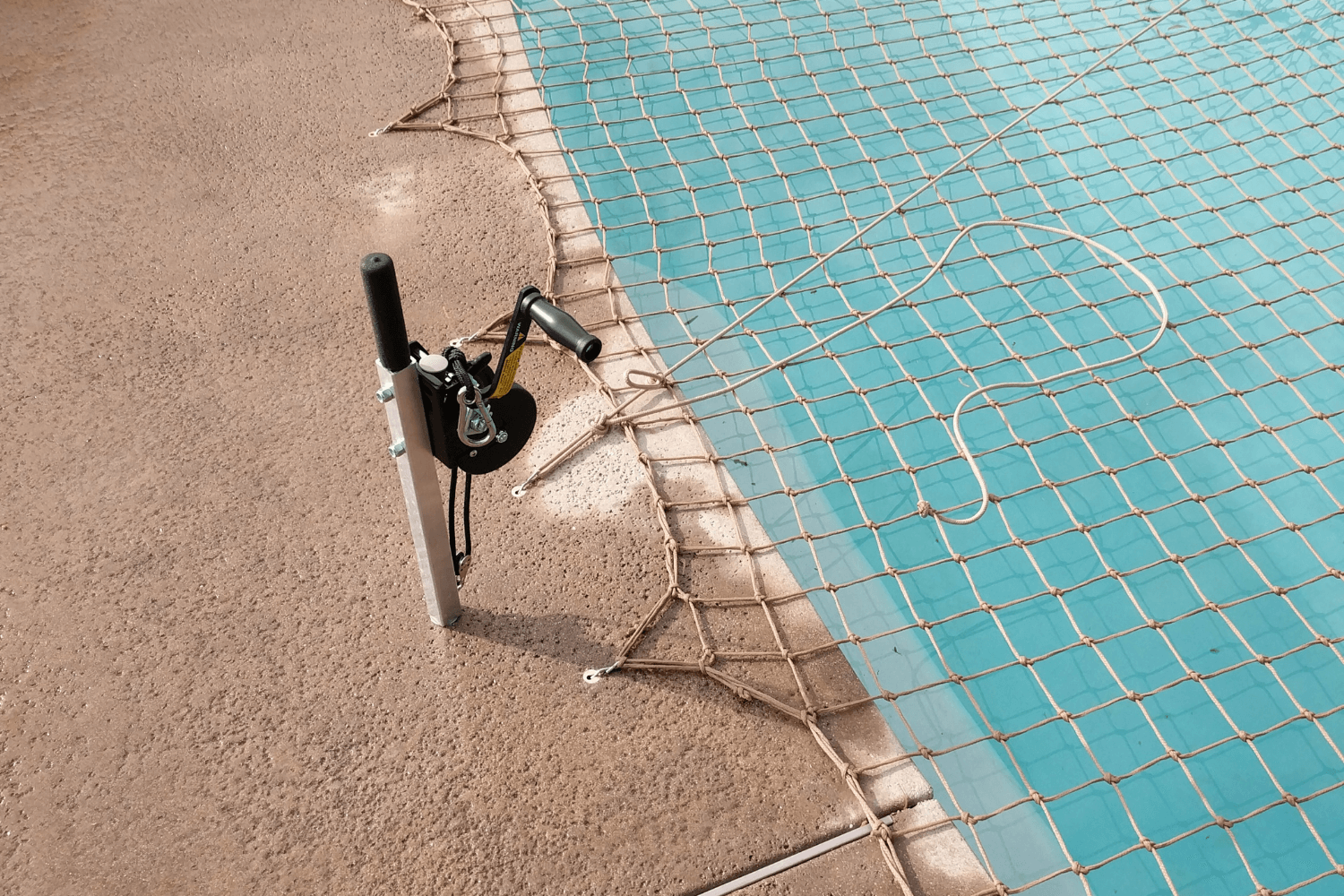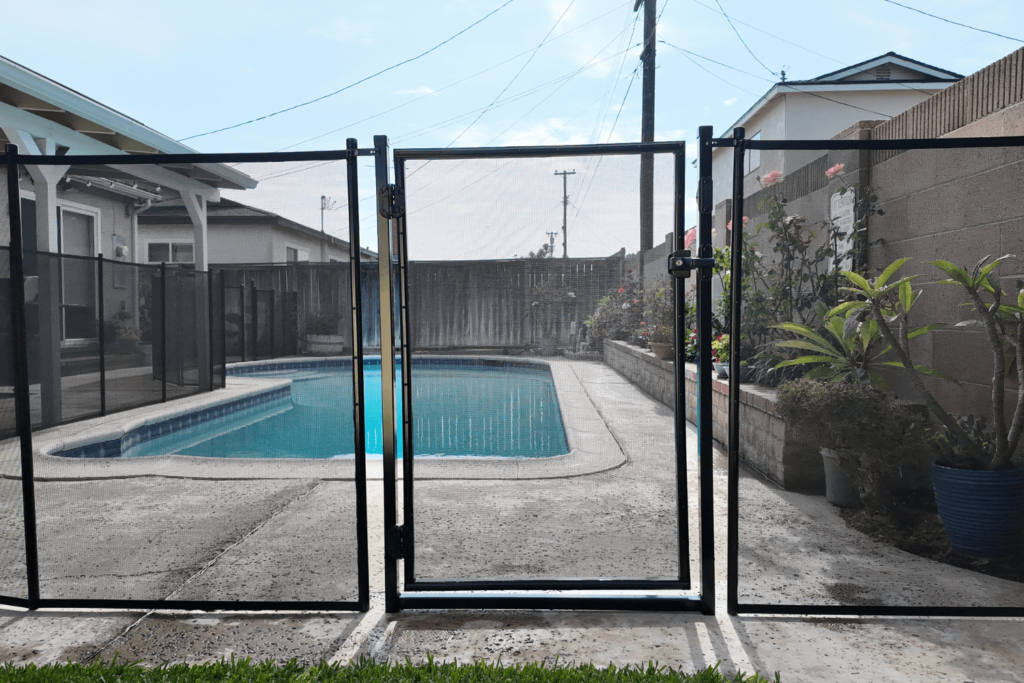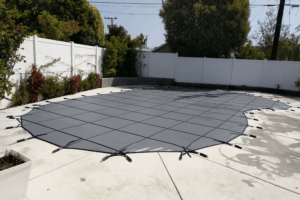
Pool Area Maintenance Tasks You Shouldn’t Skip
Even diligent pool owners miss key maintenance steps. Use this checklist to catch commonly forgotten tasks and keep your pool area safer and more efficient year-round.

The safety net for your pool plays an important role in preventing unsupervised access that heightens the risk of an accidental drowning. When properly installed, your safety net holds potential drowning victims up and out of the water, often near the edge of the pool where it’s easier to help them to safety. When paired with a pool net leaf cover, you’re protecting your investment, minimizing your pool cleaning needs, and keeping your loved ones safer around your backyard oasis.
Safety nets are popular for pools with unique or asymmetrical shapes, adjacent structures, or other considerations that might make a safety cover or removable mesh pool fence impractical. Safety nets are anchored around the pool deck or to adjoining structures with strong metal clips. The rip and weather-resistant cord knotted into a mesh net is tensioned by a series of central springs attached to a separate anchor point. This system creates a safety barrier that can fit almost any pool shape, including going under, around, or over obstacles while still providing superior protection.

Safety nets for pools not only make excellent safety barriers on their own but also work well as the second layer of protection behind a removable mesh pool fence. While the fence creates a secure perimeter around the swimming pool area, the safety net ensures that even wildlife or prodigious climbers are met with a closed swimming pool and no way to enter the water. To provide the best protection, however, your swimming pool safety net needs to be kept in good condition.
However, swimming pool safety barriers are only effective if they’re properly installed, secured, and in good repair. Properly maintaining your safety net for the pool and its pool net leaf cover will make sure both are ready for a long service life protecting your pool, water, and swimmers. Here’s how to keep them in great shape:
Remove any sticks, twigs, or other debris every usage. Every 6-8 weeks, clean the net with a soft-bristle brush and gentle detergent. This will remove dirt, residues, and other detritus that can have a negative impact on your net’s longevity or end up leaching into your pool water. While a pool net leaf cover may help keep your net cleaner, this should still be done at least a couple of times every season.
Cleaning the safety net for your pool is also the perfect opportunity to check for any signs of stress, strain, or damage. Carefully check the knotted cord, anchor clips, anchor points, and the central tensioning system. Whether you notice damage during these periodic checks or while using your pool between them, damage needs to be repaired as soon as possible after it’s noticed. Since damaged areas pass more stress on to neighboring structures, unmanaged issues soon turn into cascading failures that render your safety net of pools useless.
You should always make sure your net is in place, tensioned, and secure as soon as you’re done using the pool. This helps make sure you have a safety barrier protecting your pool and swimmers as soon as possible, but it also serves an important role in maintaining your pool safety net. Safety nets for swimming pools are most effective when they’re properly tensioned, but the longer your net is off the poles, the more the fibers making up your net relax. This changes the net’s apparent shape or size, and may lead to over or under-tensioning during the next re-installations, either of which weakens the net’s protection and resiliency.
When you remove your net from the pool, it should be stored on a roller or carefully folded and placed in a storage bag or trunk. While simply tossing it along the side of your pool may let you enjoy the water quicker, it can lead to snags, tangles, weathering, and premature wear. In addition, it can become a tripping and entanglement hazard, putting everyone in the swimming pool area at risk.
Safety nets for pools are barrier devices meant to save lives. They’re not for recreational climbing, games, or playtime. Using your safety net or leaf cover for recreation adds more stress to the components, potentially shortening their service life or damaging them.
Excess heat can singe, melt, or otherwise damage the materials that make up your safety net for swimming pools. That means avoid storing your net next to your grill, pool heater, or any object that collects and stores ambient heat from the surrounding air or the sun’s UV rays. If the poly cord or twine seems melted, warped, or fused together, repair your net as soon as possible to keep these weaker areas from putting your family in danger.
Your community’s independent All-Safe Pool installation pro is your go-to source for swimming pool safety net installation, repair, and advice. They’ve dedicated their careers to saving lives by helping pool owners build safer swimming pools. Contact them for a free initial consultation about keeping your loved ones safe around the water.
Whether you’re planning a DIY net for your pool or need to make repairs, we have the parts you need for your ASTM-certified swimming pool safety net or pool net leaf cover. Make sure your pool is protected. Order your safety net, parts, and accessories from All-Safe Pool today.

Even diligent pool owners miss key maintenance steps. Use this checklist to catch commonly forgotten tasks and keep your pool area safer and more efficient year-round.

Learn the most common pool winterizing mistakes and how to avoid them for a safer, cleaner backyard during the off-season.

Mesh pool covers offer reliable winter protection by keeping out debris and preventing accidents. Learn why they’re a smart choice for safety and peace of mind.
Enter your zip code to locate an independent installer in your area
Enter your zip code to locate an independent installer in your area
Their contact info will be shown on the next screen.
Due to the many variations in monitors, phones, and browsers, color samples and product examples may appear different on different screens. Computers and mobile devices are not all calibrated equally and color reproduction on the Internet is not precise. The same is true for printed items such as brochures and other sales literature.
In addition, the colors of our products photograph differently under different lighting conditions. For example, photos taken in full sunlight will vary from photos taken on a cloudy or overcast day. Similarly, shadows from nearby objects can affect the color and transparency of our products. If a precise color or specific shade is important, please inspect the actual color of your product prior to installation.
Many of our products’ materials are not available through typical stores and vendors and therefore must be custom manufactured specifically for our use. In order to control costs and provide you with the best value possible, our raw materials are produced in large batches and can often take several months to receive. The colors of our materials can, and often do, vary slightly from batch to batch. Although we make every effort to minimize color variations, we cannot be responsible for these differences when they occur. If a precise color or specific shade is important, please inspect the actual color of your product prior to installation.
For example, we use the name “putty” to describe some of our products. Your idea of the color “putty” may be different than someone else’s idea of “putty”. In addition, products may have the same color name but may not be the exact same color. For example, we have different shades of “black”. Please do not order using color names as your only guide. If a precise color or specific shade is important, please inspect the actual color of your product prior to installation.
If it is important that your product be an exact color or shade, it is highly recommended that you inspect the actual product prior to its installation and address any concerns with your local independent installer. Most independent installers do not offer refunds or accept returns due to color variations.